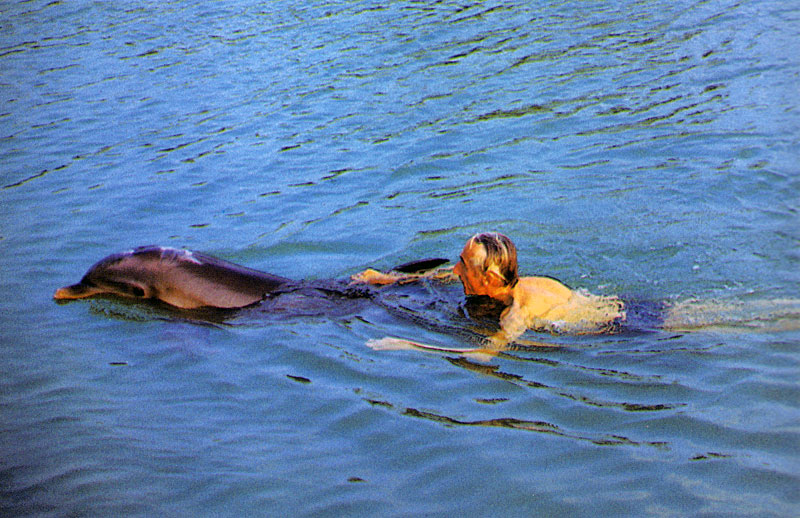Compute community-level metrics in social networks with NetworkX

Community detection in dolphin networks (and why social scientists may be interested).
This blogpost provides a fully functioning script to: i) open and prepare a dataset; ii) run a model; and iii) retrieve new, useful information from the model’s output.
To work on a project similar to the one discussed in this blogpost, you’ll need a functional Python programming environment. For this I recommend Anaconda, which makes Python programming easier (it comes with many packages pre-installed, helps you to install packages, manage package dependencies, and it includes Jupyter Notebooks, among other useful programs). The remainder of this post assumes that you are working with Anaconda and Jupyter Notebooks. This page will help you to get started with Anaconda, the installation of packages, and Jupyter Notebooks.
Additionally, you’ll need to install the following extra package(s) for the script below to function:
NetworkX
This page will help you to get started with Anaconda, the installation of packages, and Jupyter Notebooks.
The case
Community detection in dolphin networks
Social scientists may have some fun now and then, for instance, when renaming their interviewees to protect their anonymity. But, the real fun appears to be reserved for marine biologists, who can invent entirely new names for their research subjects, such as Bumber, Ripplefluke, and TR77. This post draws on the Dolphin dataset by Lusseau et al. (2003) to demonstrate how to unpack the output of community detection algorithms (see the graph below to get an idea of how much fun Lusseau and his team must have had).
Building on the Dolphin dataset, the NetworkX package in Python and existing community detection algorithms, my script below allows you to retrieve community-level metrics, such as density and transitivity, and add them to a Pandas dataframe. The result will look similar to this table (note that the code below adds a few extra variables to the dataframe):
| Community | Density | Transitivity |
|---|---|---|
| 0 | 0.27619 | 0.484615 |
| 1 | 0.226316 | 0.42233 |
| 2 | 0.345455 | 0.482143 |
| 3 | 0.275 | 0.445161 |
Note: This graph is made using a slightly modified script taken from this chapter in the formidable online text book Introduction to Cultural Analytics & Python. The method to produce such graphs will not be further discussed in this blogpost.
Why may social scientists be interested?
Apart from marine biologists, social scientists may also like to compare the communities within a given network. For example, Uzzi and Spiro (2005) found that the cohesion within communities among Broadway musical creators matters for their creative success. In fact, they demonstrated that cohesion and creative success are characterized by an inverted U-shaped relationship. So, initially, more cohesion leads more creative success, but up to a certain threshold, when this is crossed, more cohesion will dampen creativity. Let us now turn to the program that can process the output of community detection algorithms.
The code
1. Open and prepare the dataset
Copy-paste the code below in your Python programming environment (e.g. a Jupyter Notebook). Here we create a new dataframe called df_dol, which we will later turn into a graph object (a technical term for a network). These data are already “in shape,” so we don’t have to do any data wrangling.
# Create the dataset
import pandas as pd
source = ['Beak', 'Beak', 'Beak', 'Beak', 'Beak', 'Beak', 'Beescratch', 'Beescratch', 'Beescratch', 'Beescratch', 'Beescratch', 'Beescratch', 'Beescratch', 'Beescratch', 'Bumper', 'Bumper', 'Bumper', 'Bumper', 'CCL', 'CCL', 'CCL', 'Cross', 'DN16', 'DN16', 'DN16', 'DN16', 'DN21', 'DN21', 'DN21', 'DN21', 'DN21', 'DN21', 'DN63', 'DN63', 'DN63', 'DN63', 'DN63', 'Double', 'Double', 'Double', 'Double', 'Double', 'Feather', 'Feather', 'Feather', 'Feather', 'Feather', 'Fish', 'Fish', 'Fish', 'Five', 'Fork', 'Gallatin', 'Gallatin', 'Gallatin', 'Gallatin', 'Gallatin', 'Grin', 'Grin', 'Grin', 'Grin', 'Grin', 'Grin', 'Grin', 'Grin', 'Grin', 'Grin', 'Haecksel', 'Haecksel', 'Haecksel', 'Haecksel', 'Haecksel', 'Haecksel', 'Hook', 'Hook', 'Hook', 'Hook', 'Hook', 'Jet', 'Jet', 'Jet', 'Jet', 'Jet', 'Jonah', 'Jonah', 'Jonah', 'Jonah', 'Jonah', 'Jonah', 'Knit', 'Knit', 'Kringel', 'Kringel', 'Kringel', 'Kringel', 'Kringel', 'Kringel', 'MN105', 'MN105', 'MN105', 'MN105', 'MN105', 'MN60', 'MN60', 'MN60', 'MN83', 'MN83', 'MN83', 'Mus', 'Mus', 'Notch', 'Oscar', 'Oscar', 'Patchback', 'Patchback', 'Patchback', 'Patchback', 'Patchback', 'PL', 'PL', 'Ripplefluke', 'Scabs', 'Scabs', 'Scabs', 'Scabs', 'Scabs', 'Scabs', 'Shmuddel', 'Shmuddel', 'Shmuddel', 'SN100', 'SN100', 'SN100', 'SN100', 'SN4', 'SN4', 'SN4', 'SN4', 'SN63', 'SN63', 'SN63', 'SN63', 'SN89', 'SN9', 'SN90', 'SN90', 'SN96', 'SN96', 'Stripes', 'Stripes', 'Topless', 'Topless', 'Topless', 'TR120', 'TR82', 'TR99', 'Trigger', 'TSN83', 'Upbang']
target = ['Fish', 'Grin', 'Haecksel', 'SN9', 'SN96', 'TR77', 'Jet', 'Knit', 'Notch', 'Number1', 'Oscar', 'SN100', 'SN90', 'Upbang', 'Fish', 'SN96', 'Thumper', 'Zipfel', 'Double', 'Grin', 'Zap', 'Trigger', 'Feather', 'Gallatin', 'Wave', 'Web', 'Feather', 'Gallatin', 'Jet', 'Upbang', 'Wave', 'Web', 'Knit', 'Number1', 'PL', 'SN9', 'Upbang', 'Kringel', 'Oscar', 'SN4', 'Topless', 'Zap', 'Gallatin', 'Jet', 'Ripplefluke', 'SN90', 'Web', 'Patchback', 'SN96', 'TR77', 'Trigger', 'Scabs', 'Jet', 'Ripplefluke', 'SN90', 'Upbang', 'Web', 'Hook', 'MN83', 'Scabs', 'Shmuddel', 'SN4', 'SN63', 'SN9', 'Stripes', 'TR99', 'TSN103', 'Jonah', 'MN83', 'SN9', 'Topless', 'Vau', 'Zap', 'Kringel', 'Scabs', 'SN4', 'SN63', 'TR99', 'MN23', 'Mus', 'Number1', 'Quasi', 'Web', 'Kringel', 'MN105', 'MN83', 'Patchback', 'Topless', 'Trigger', 'PL', 'Upbang', 'Oscar', 'SN100', 'SN63', 'Thumper', 'TR77', 'TR99', 'Patchback', 'Scabs', 'SN4', 'Topless', 'Trigger', 'SN100', 'Topless', 'Trigger', 'Patchback', 'Topless', 'Trigger', 'Notch', 'Number1', 'Number1', 'PL', 'TR77', 'SMN5', 'Stripes', 'Topless', 'Trigger', 'TSN103', 'SN96', 'TR77', 'Zig', 'Shmuddel', 'SN4', 'SN63', 'SN9', 'Stripes', 'TR99', 'SN4', 'Thumper', 'TR88', 'SN4', 'SN89', 'SN9', 'Zap', 'SN9', 'Stripes', 'Topless', 'Zipfel', 'Stripes', 'Thumper', 'TSN103', 'Whitetip', 'Web', 'TSN103', 'Upbang', 'Web', 'TR77', 'TR99', 'TR120', 'TSN83', 'TR99', 'Trigger', 'Zap', 'TR88', 'Web', 'Trigger', 'Vau', 'Zipfel', 'Web']
dict = {'source': source, 'target': target}
df_dol = pd.DataFrame(dict)
print(df_dol)
2. Run the model
Analyze the data with networkX, which is pre-installed by Anaconda.
# Turn dataframe into graph object
import networkx as nx
g = nx.from_pandas_edgelist(df_dol, 'source', 'target', edge_attr=None, create_using=nx.Graph())
nodes = g.nodes()
edges = g.edges()
print(nx.info(g))
density = nx.density(g)
print('Network density:', density)
# Run the community detection algorithm of your choice (e.g. fluid communities or greedy modularity)
from networkx.algorithms import community
communities = community.asyn_fluidc(g, 4, max_iter=100, seed=None)
# Alternatively, change "asyn_fluid" into "greedy_modularity_communities"
3. Retrieve information from the model
The code below will loop through the list of communities, calculate different community-level metrics, and adds them to a Pandas dataframe.
# Create empty lists which will later be turned into a dataframe
dens_list=[]
trans_list=[]
top_between_list=[]
member_list=[]
index=0
# Loop through the list of communities
for index,c in enumerate(communities):
list(c)
index +=1
# Take slice of dataframe containing only the people in a given community
# This is done by creating two filters. Then apply these to the original df_dol
filter1 = df_dol['source'].isin(c)
filter2 = df_dol['target'].isin(c)
name_df = 'df_{}'.format(index)
name_df = df_dol[filter1 & filter2]
# Create graph object of this community and calculate various metrics
g = 'G_{}'.format(index)
g = nx.from_pandas_edgelist(name_df, 'source', 'target', edge_attr=None, create_using=nx.Graph())
# Density
d = 'density_{}'.format(index)
d = nx.density(g)
dens_list.append(d)
# Transitivity
t = 'trans_{}'.format(index)
t = nx.transitivity(g)
trans_list.append(t)
# Top betweenness nodes in community
from operator import itemgetter
betweenness_dict = nx.betweenness_centrality(g)
nx.set_node_attributes(g, betweenness_dict, 'betweenness')
sorted_betweenness = sorted(betweenness_dict.items(), key=itemgetter(1), reverse=True)
top_between = sorted_betweenness[:5]
top_between_list.append(top_between)
# Finally add all members of a given community
member_list.append(c)
# Create dictionary of lists
dict = {'density':dens_list,'transitivity':trans_list,'top_betweenness':top_between_list, 'members':member_list}
# And convert to dataframe which contains the specific characteristics of each community
df_community = pd.DataFrame(dict)
# Clean the two columns with lists
df_community['top_betweenness'] = [','.join(map(str, l)) for l in df_community['top_betweenness']]
df_community['top_betweenness'] = df_community['top_betweenness'].str.replace('(', ' ')
df_community['top_betweenness'] = df_community['top_betweenness'].str.replace(')', '')
df_community['members'] = [','.join(map(str, l)) for l in df_community['members']]
df_community['members'] = df_community['members'].str.replace(',', ', ')
# Print df
# When printing in Jupyter Notebooks simply write "df_community" in the bottom of a cell without "print()"
print(df_community)
Et voila! You should now have a dataframe called df_community. This can be saved as a .CSV or .XLXS file. You may also copy it to a clipboard or print it to Markdown format, as shown in the code below.
Optional
# Optional steps with the dataframe
# Save as .CSV
import os
path = 'Path/to/the/location/where/the/file/will/be/saved/' #change this to the relevant or preferred location on your computer
os.chdir(path)
df_community.to_csv('df_community.csv', sep='\t', encoding='utf-8')
# Save as .XLSX
import os
path = 'Path/to/the/location/where/the/file/will/be/saved/' #change this to the relevant or preferred location on your computer
os.chdir(path)
df_community.to_excel("df_community.xlsx")
# Copy to clipboard
df_community.to_clipboard()
# Print to Markdown
print(df_community.to_markdown())
Sources
Cousteau, J.Y. (1975). Dolphins. The Undersea discoveries of Jacques-Yves Cousteau.
Lusseau, D. et al. (2003). The bottlenose dolphin community of Doubtful Sound features a large proportion of long-lasting associations, Behavioral Ecology and Sociobiology, 54, 396-405.
Uzzi, B. and Spiro, J. (2005). Collaboration and Creativity: The Small World Problem. American Journal of Sociology, 111 (2),447–504.
For a general introduction to network analysis in Python, I refer to this instructive tutorial from the Programming Historian.

